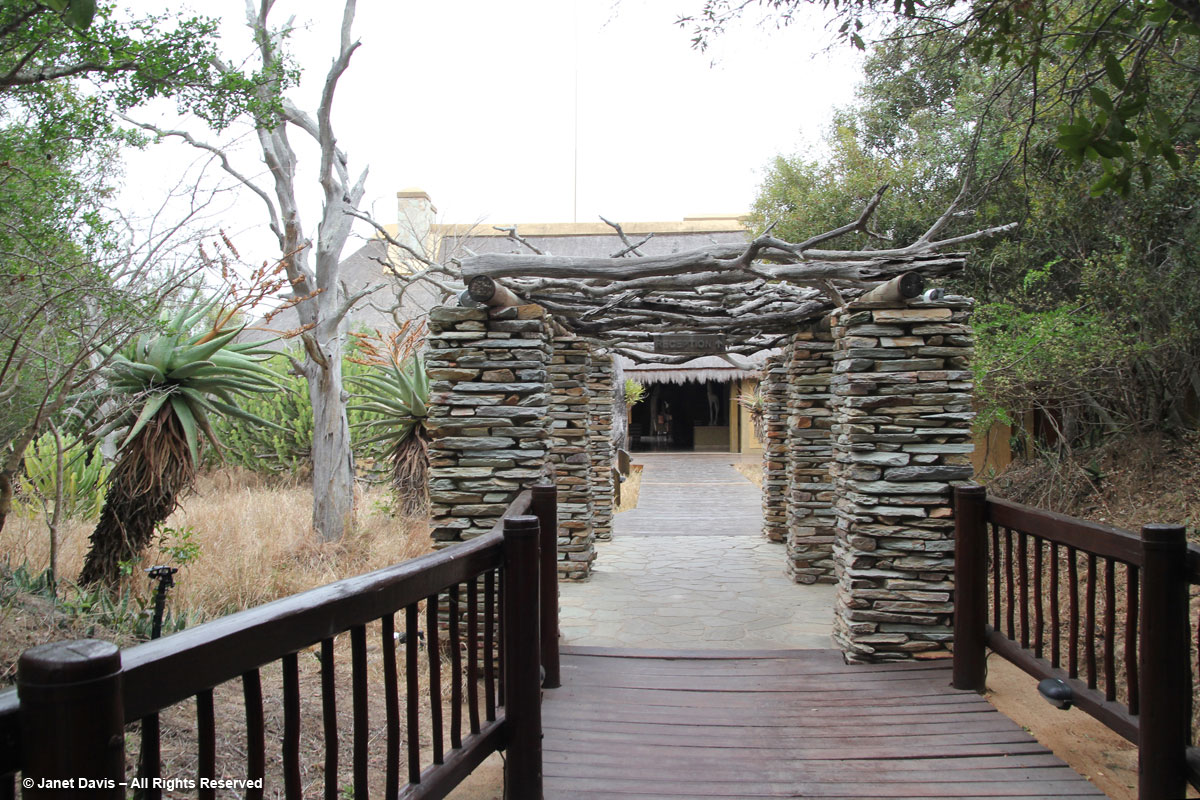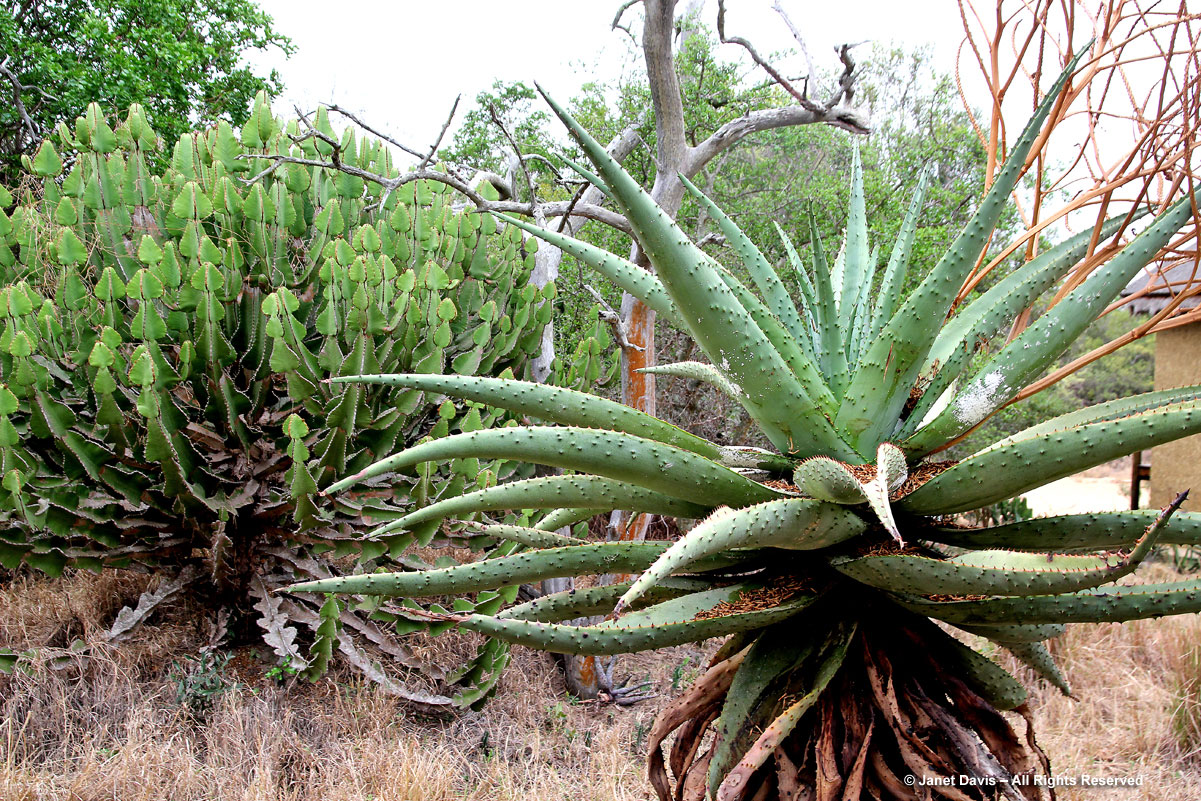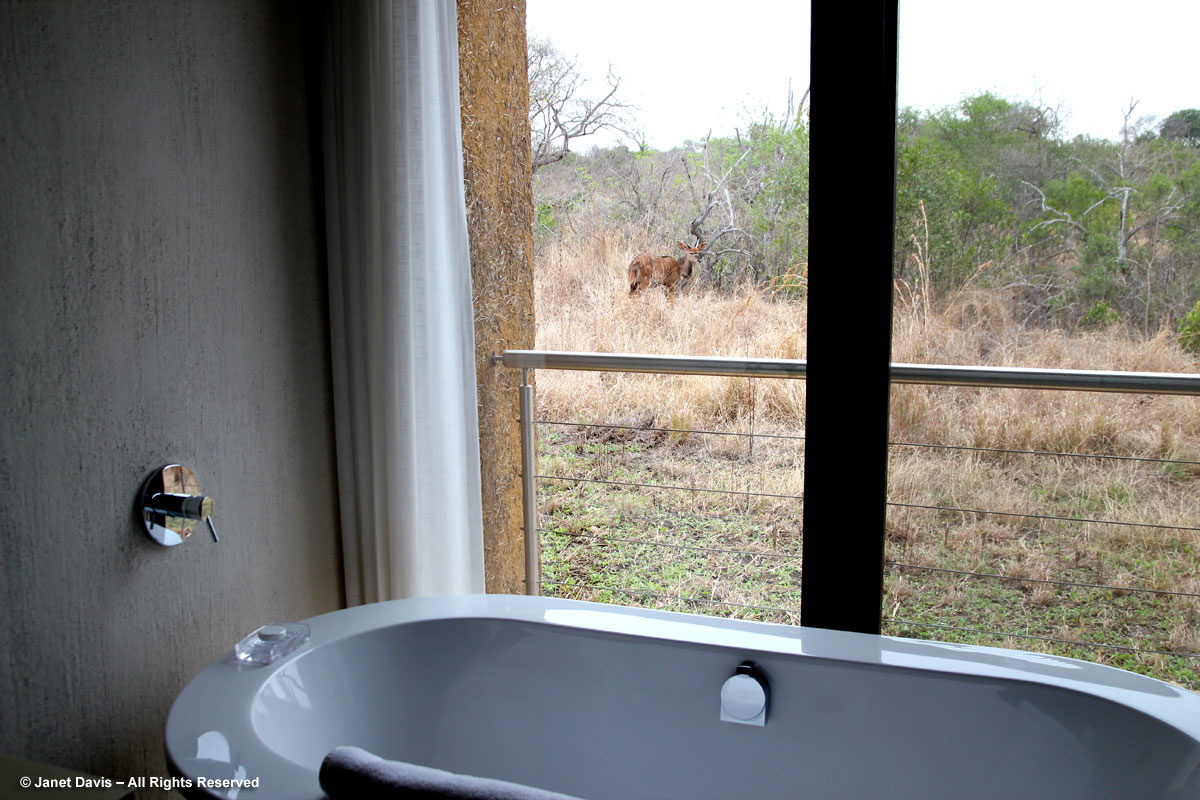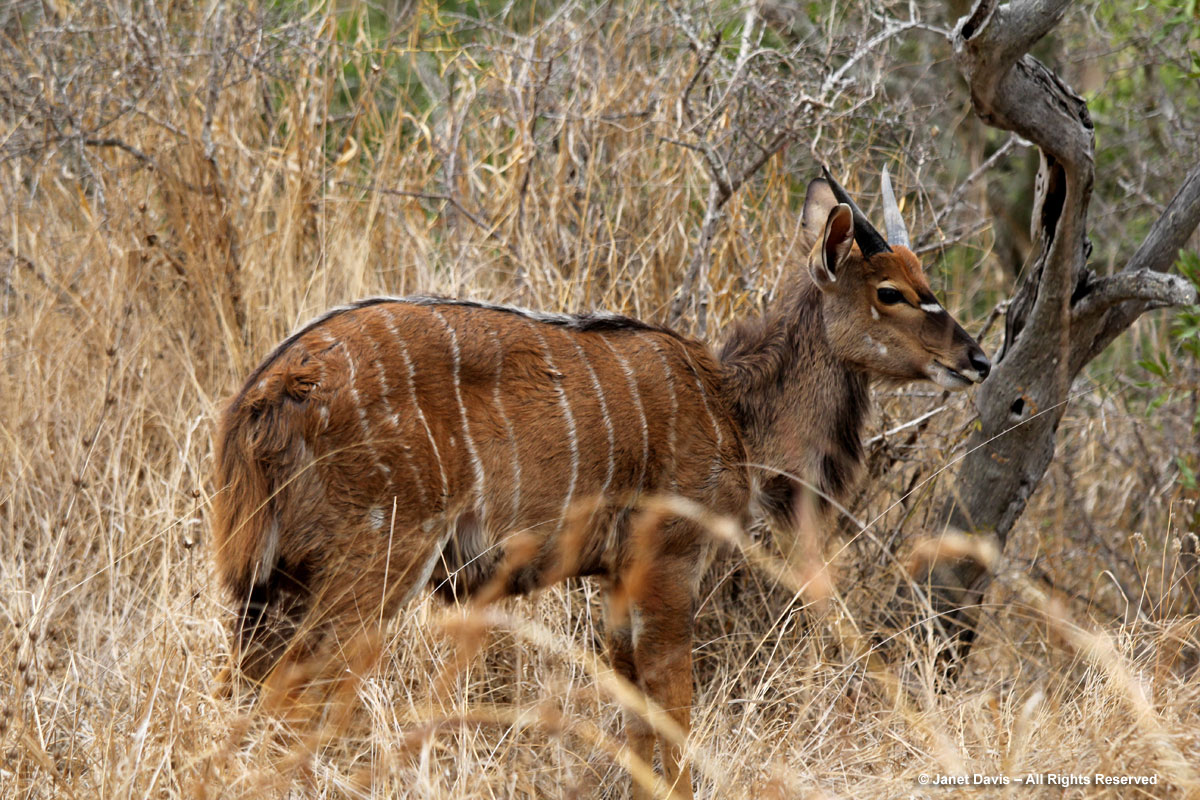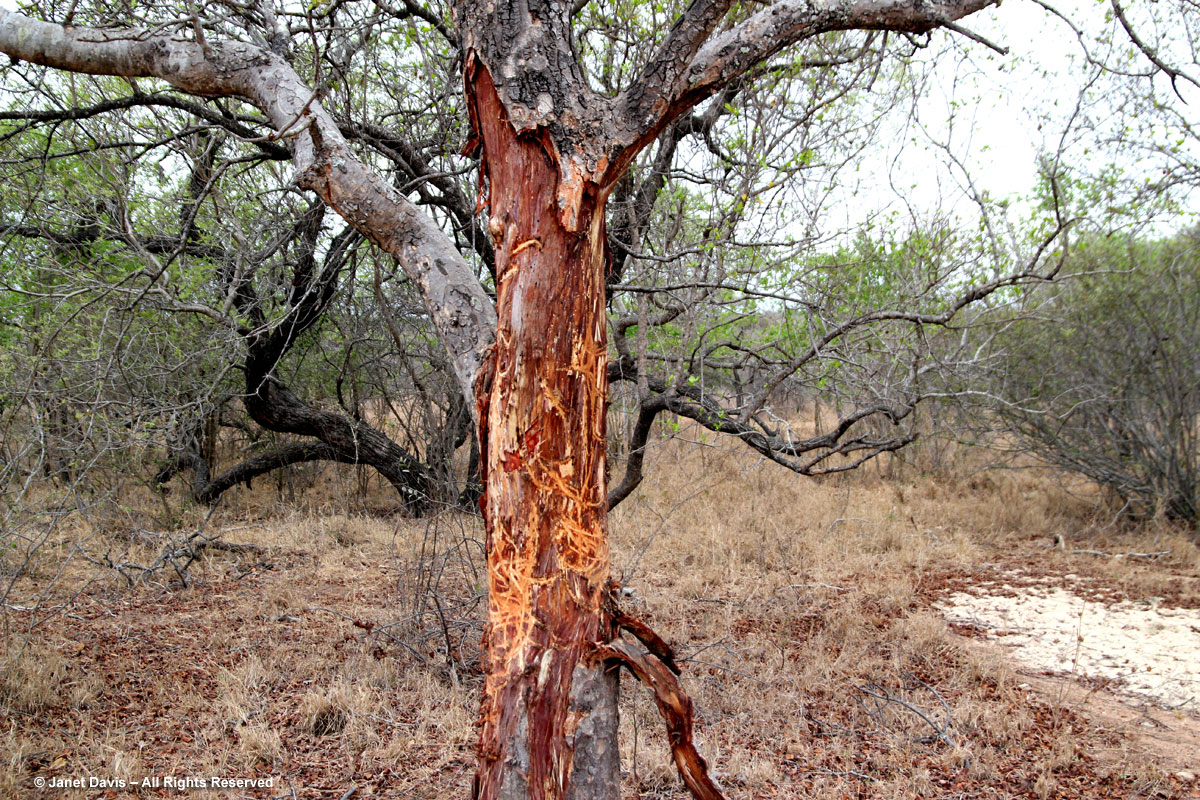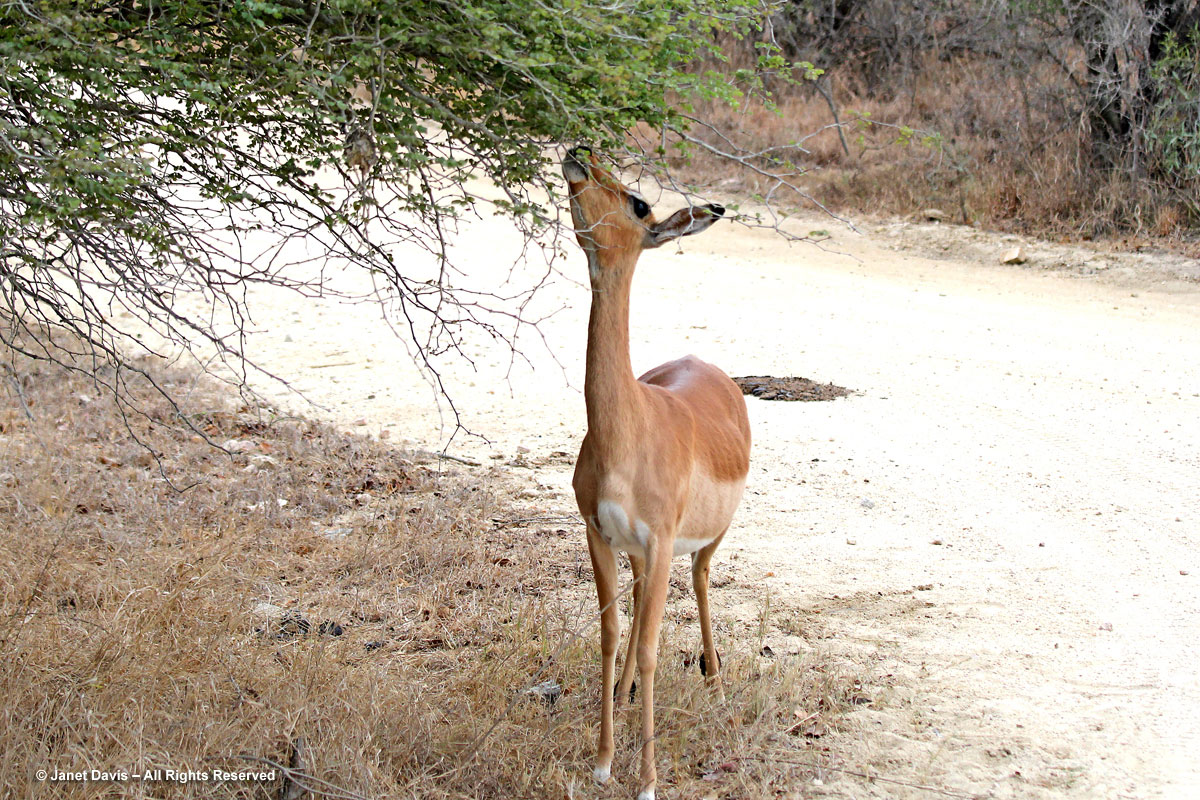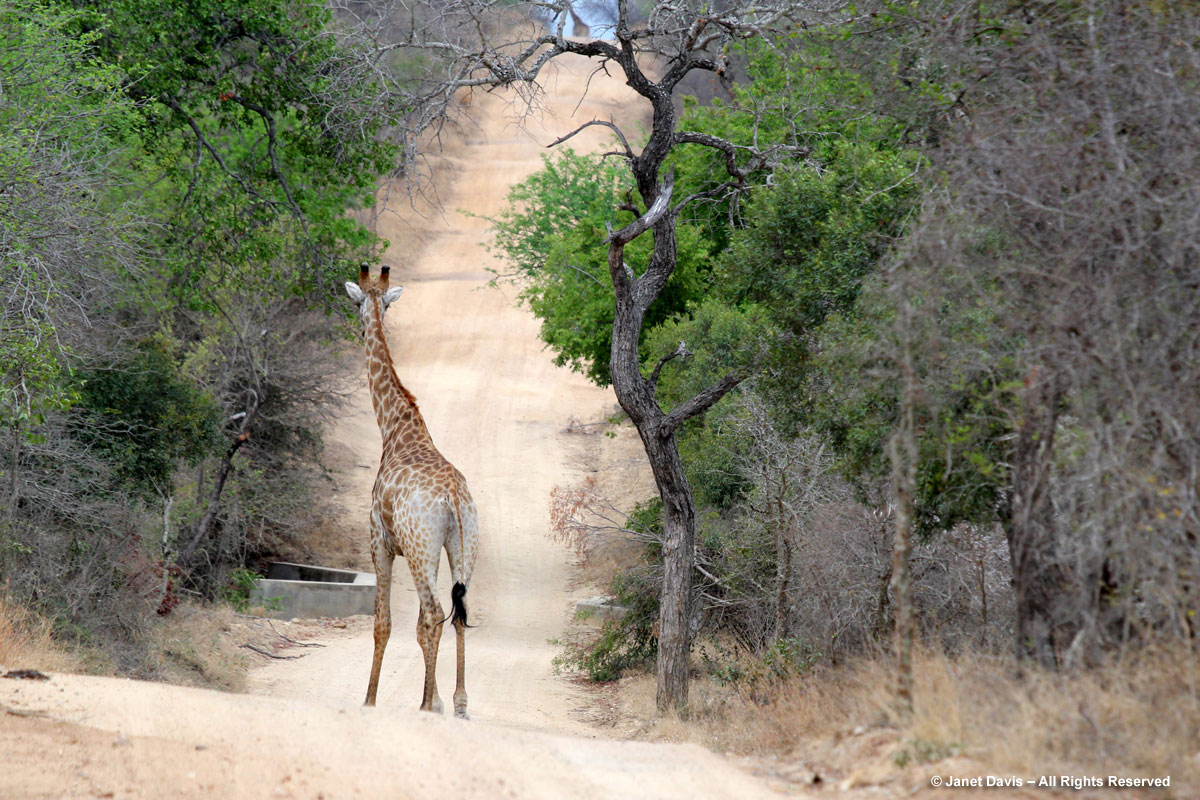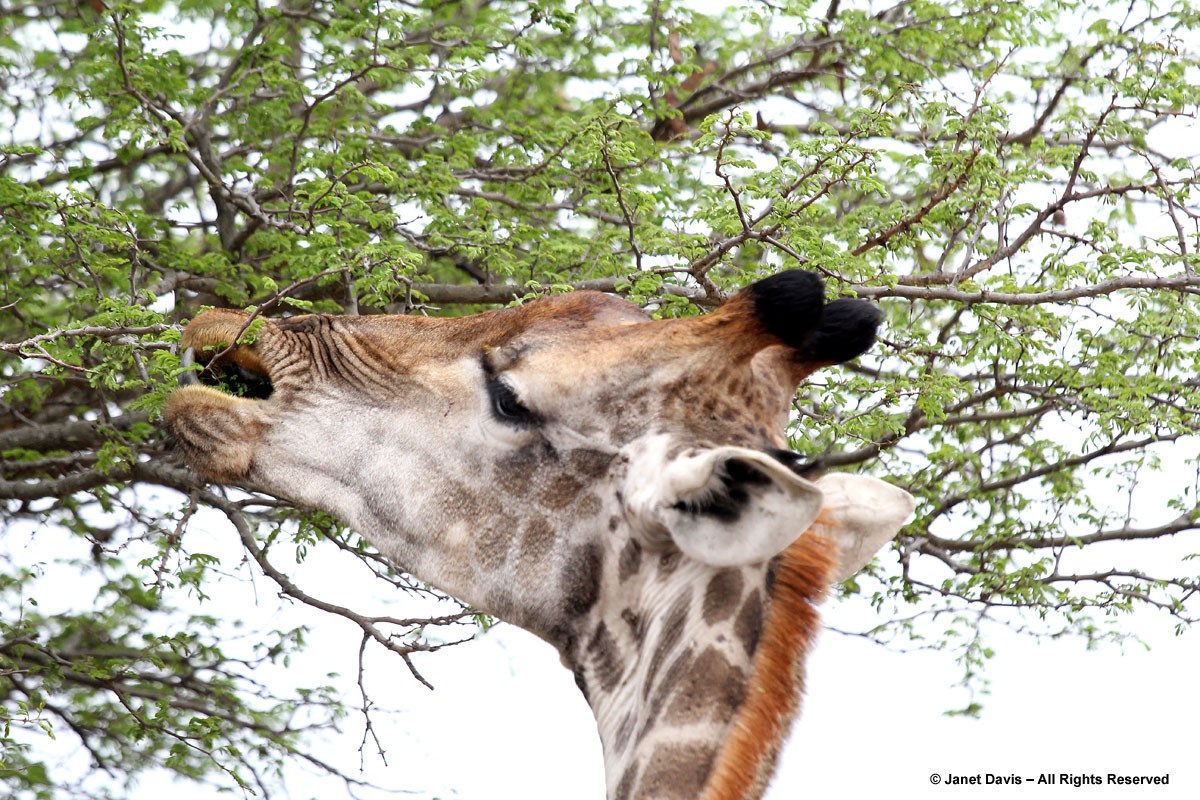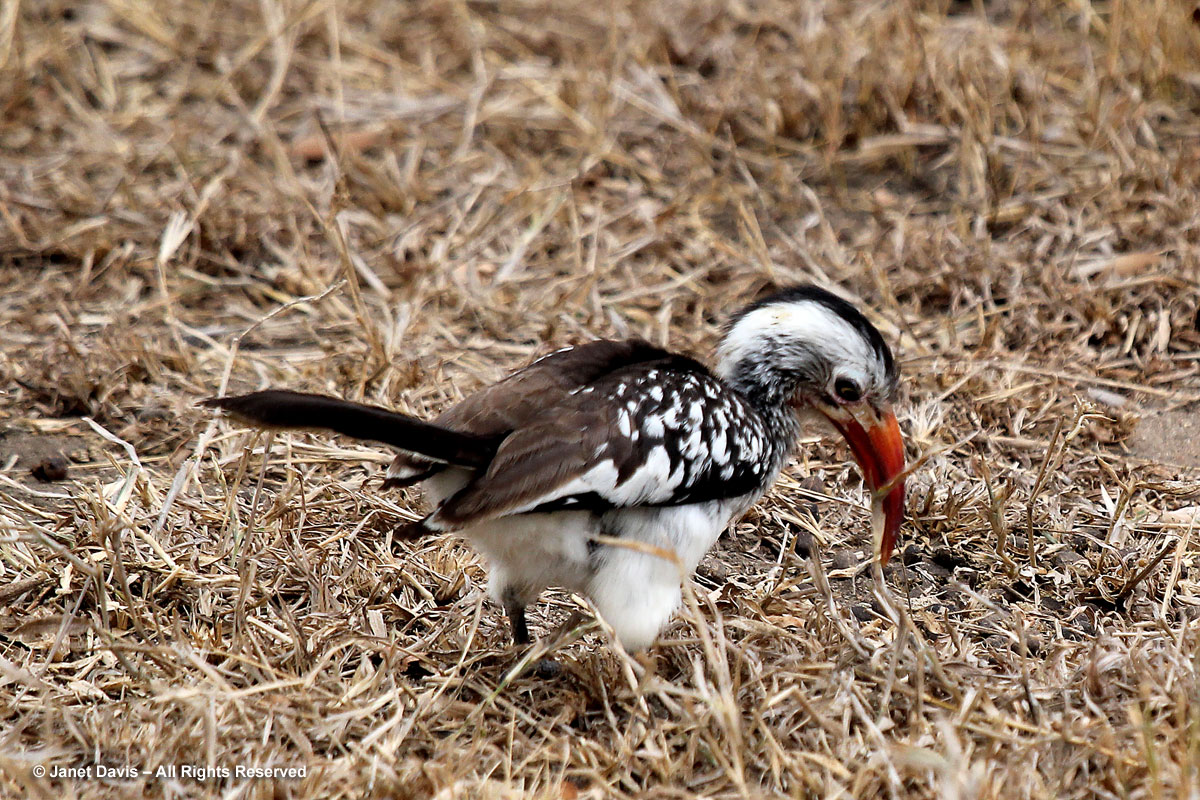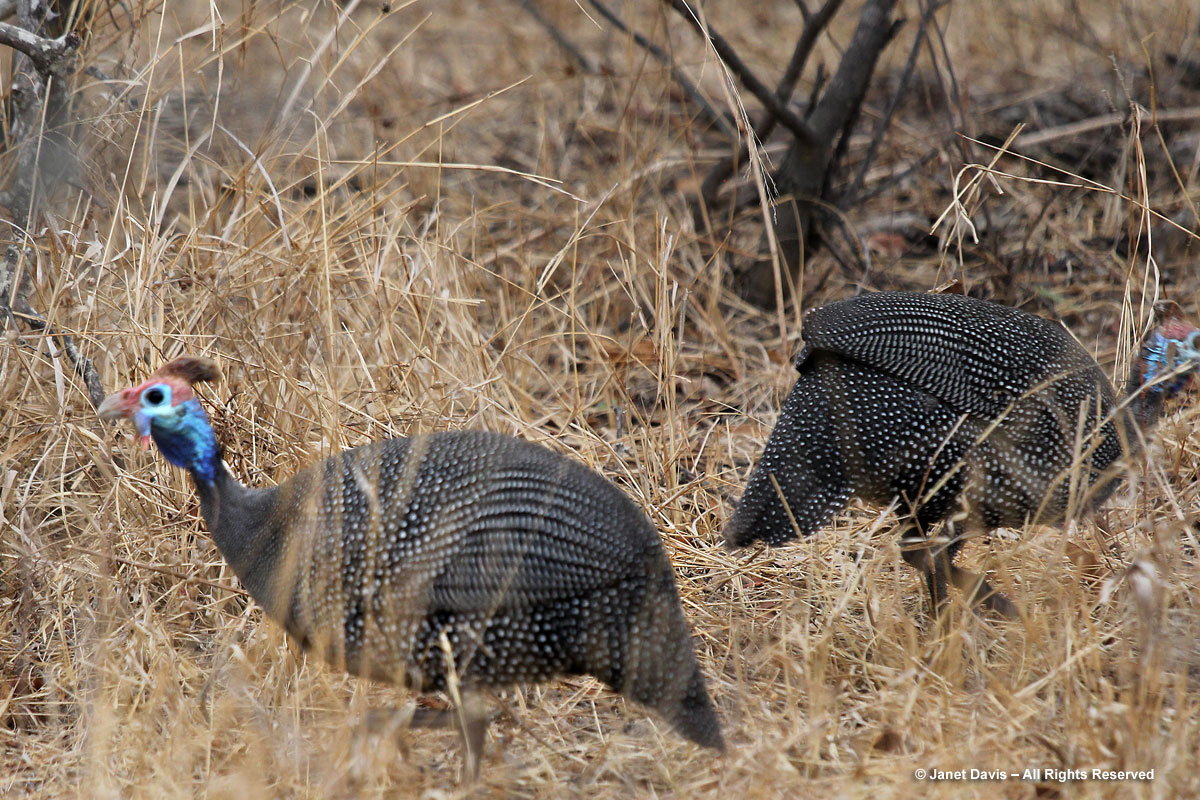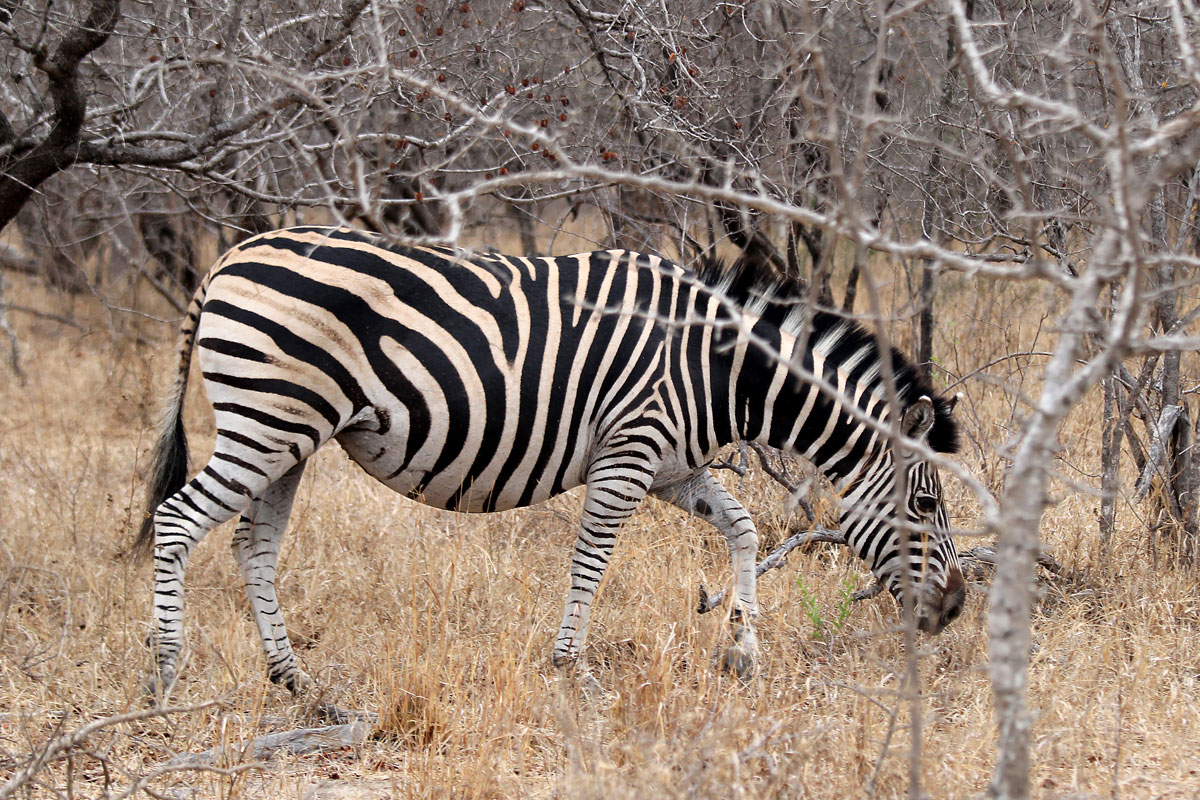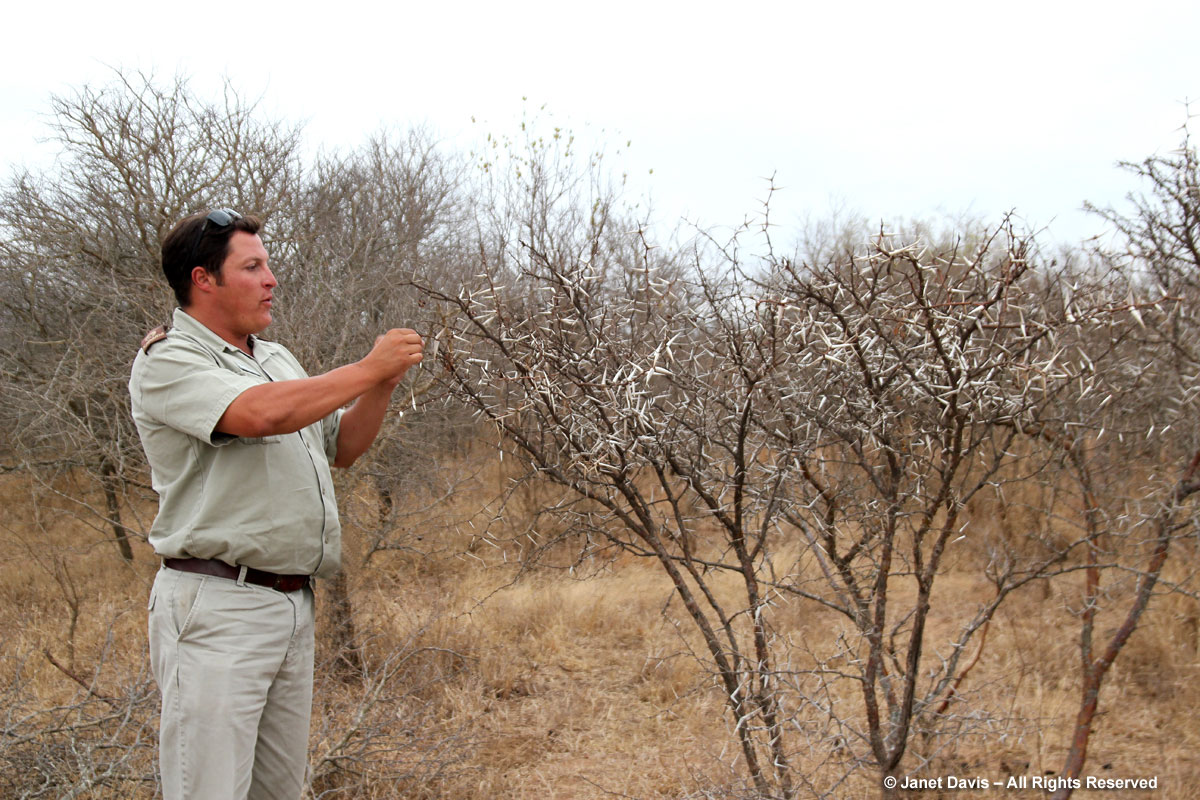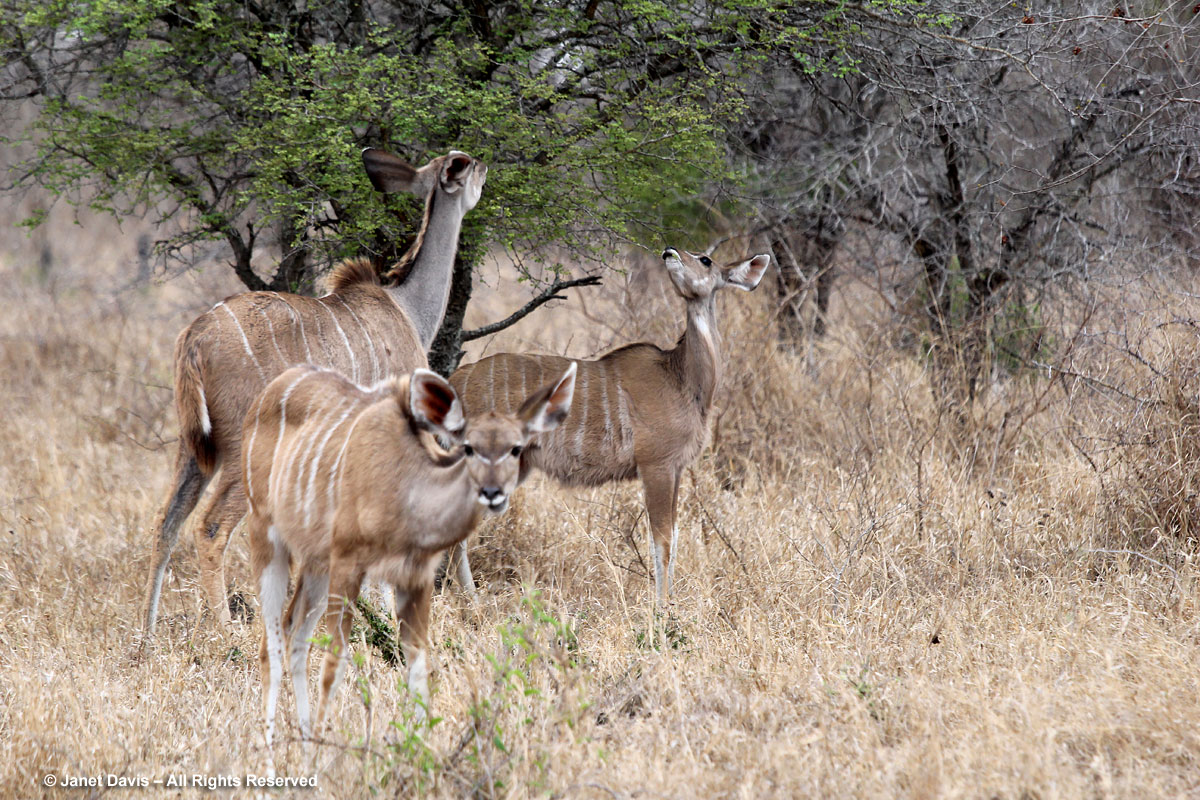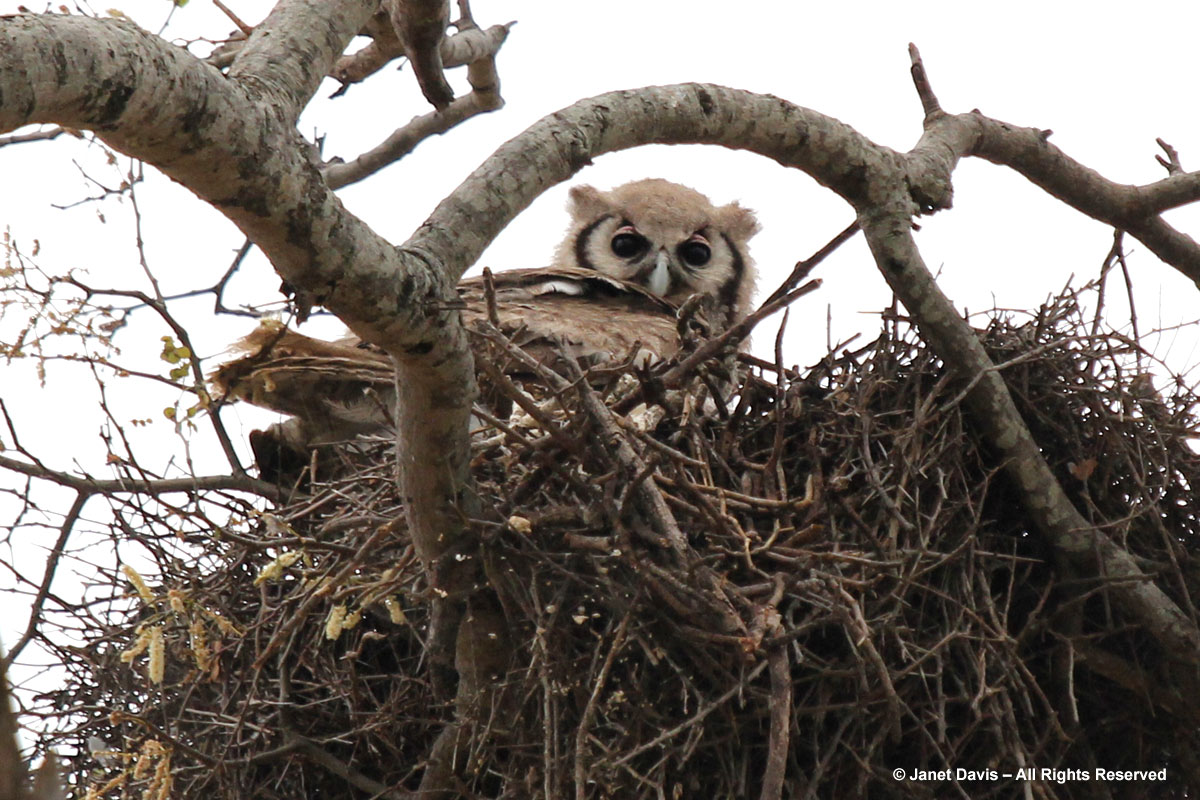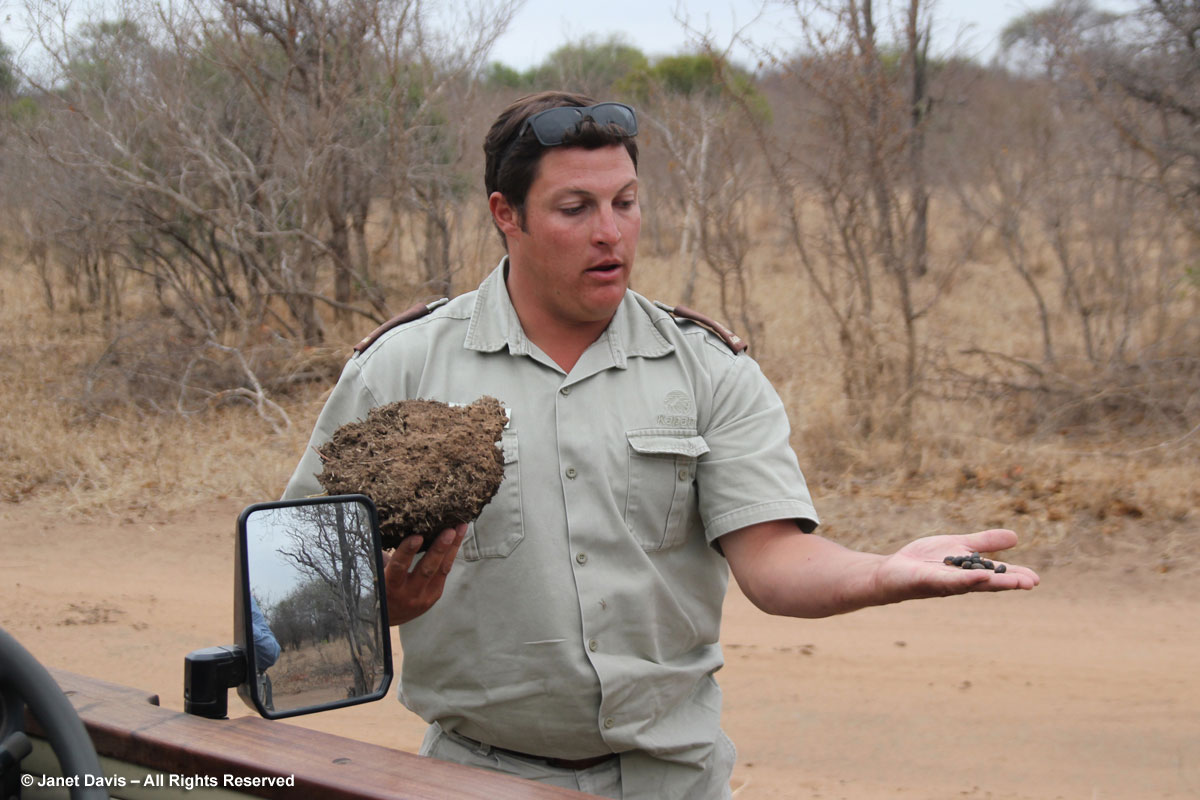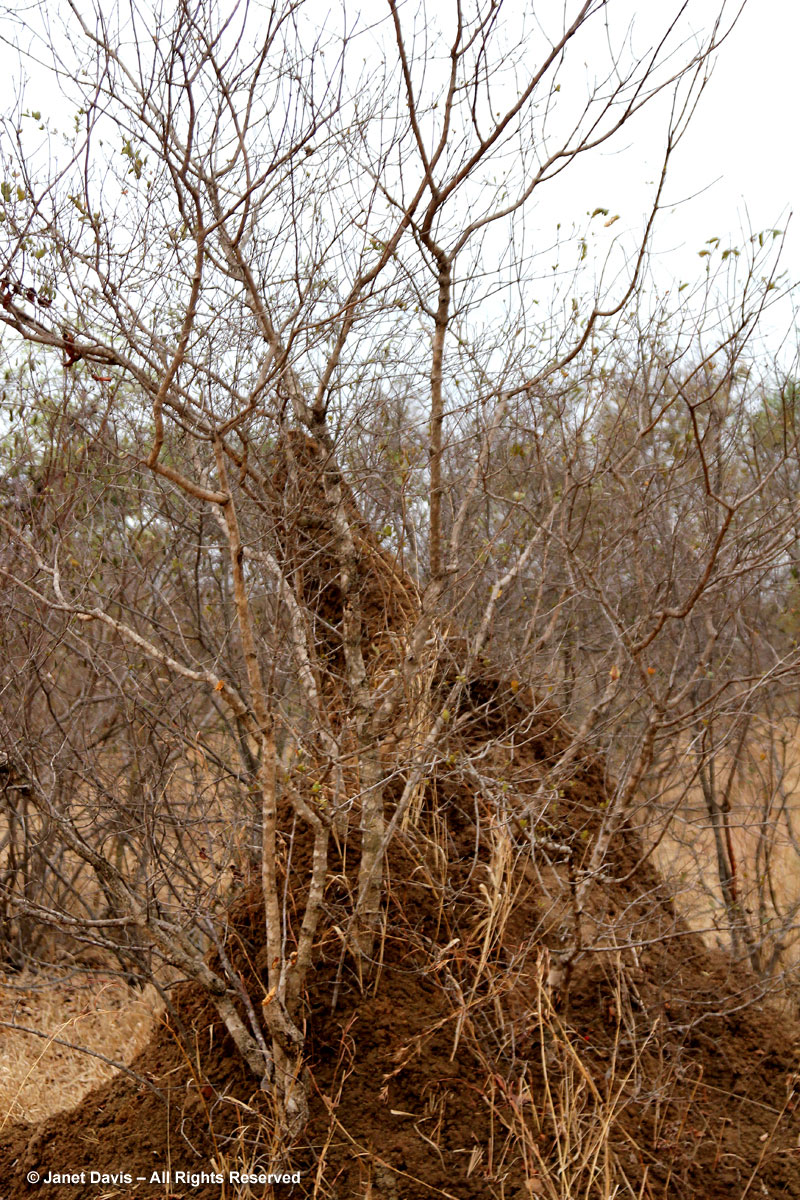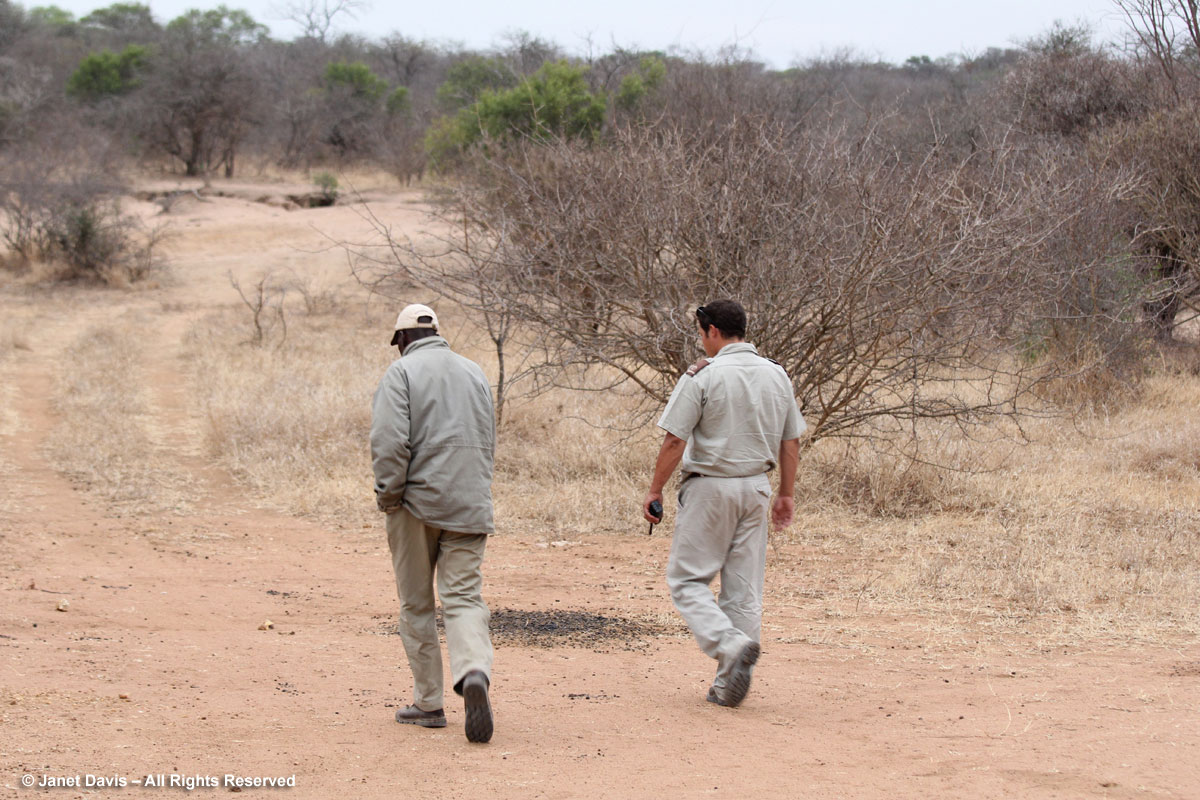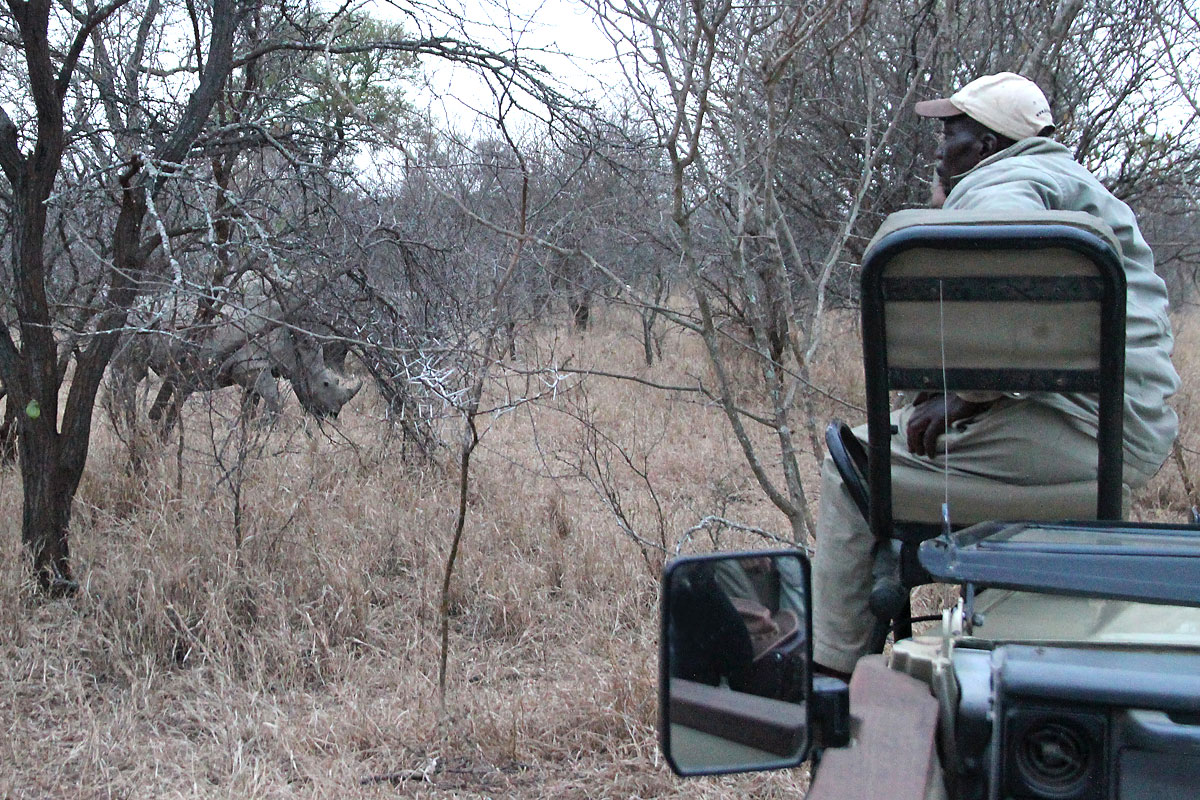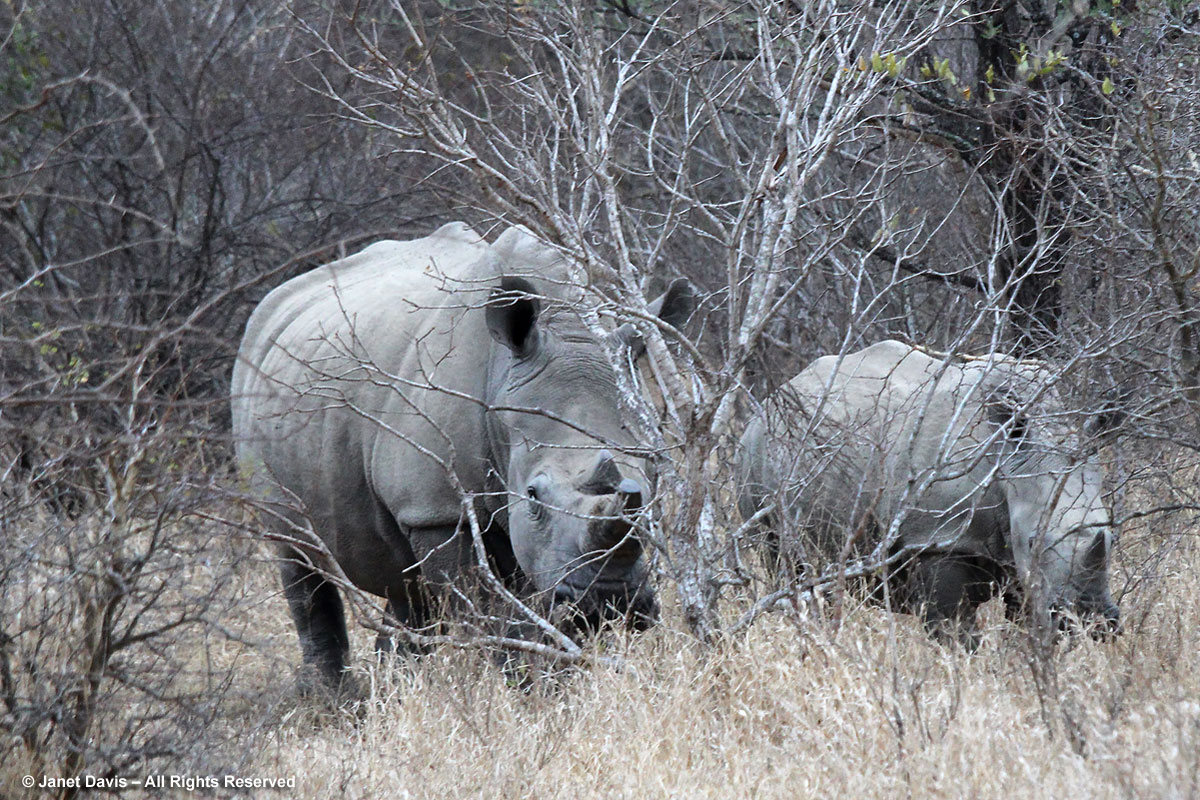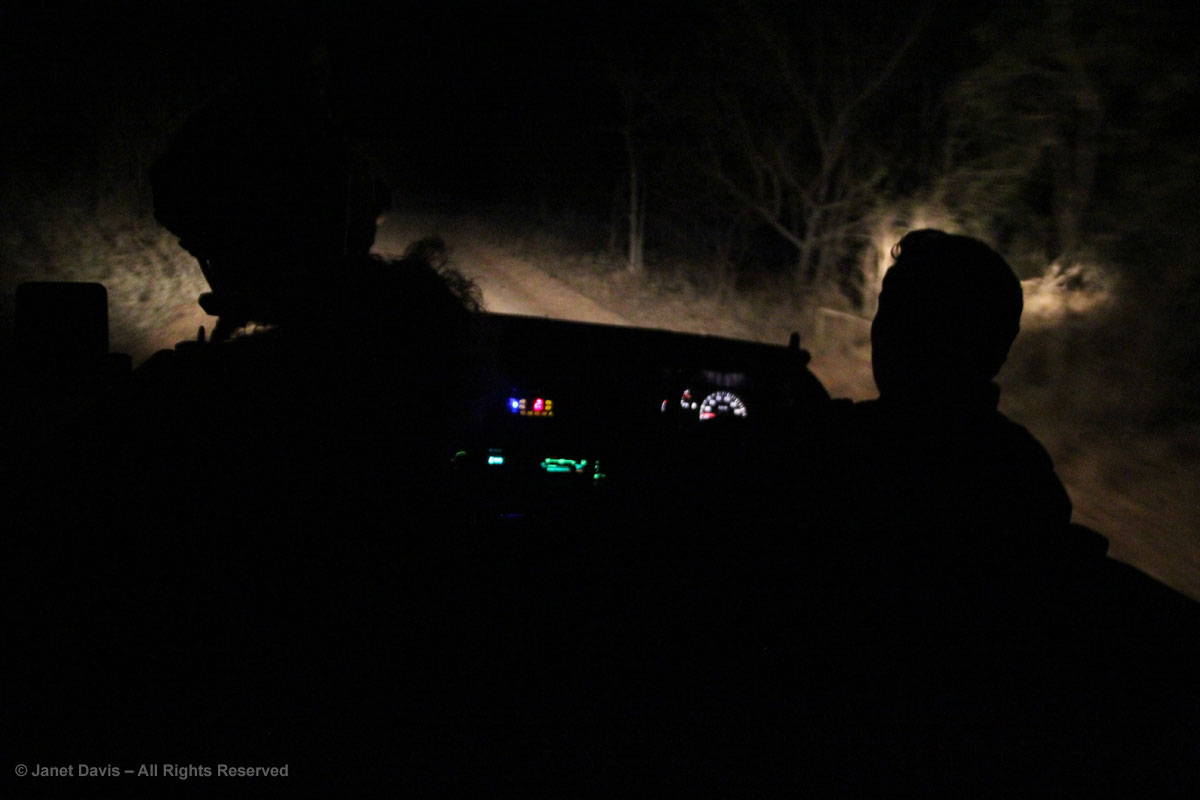Although our South Africa trip is essentially a garden tour, happily for us Donna Dawson has included a 2-night safari stay at Kapama River Lodge a 20-room eco-resort set in the 32,000-acre Kapama Private Game Reserve outside Kruger National Park. (There are three smaller lodgings on the property as well.) There are many private game reserves near Kruger
Since we arrive in the early afternoon of the day we tour the Blyde River Canyon Reserve area nearby, that gives us four game drives (this afternoon-tomorrow morning-tomorrow afternoon-following morning) before our flight to Durban from the local airport servicing Kruger.
Arriving at the lodge, we have a quick buffet lunch and head to our rooms for a rest before our first game drive, scheduled for 4-7 pm. The landscape here is natural savannah with a few added indigenous plants, like the beautiful Euphorbia ingens and the aloe.
It’s a lovely room — spacious and close to the spa, if that’s your fancy. I look through the bathroom window and browsing in the bushveld just outside is a female nyala What a treat to be so close to the antelopes! (No worries: lions and leopards are not allowed in this area.)
Our little balcony allows us to sit and get a closer look at the nyala, quietly browsing the vegetation. I have been on one other safari in Kenya and Tanzania (2007), and it is by far my favourite kind of vacation: to be in an entirely natural place in the midst of wild animals and plants, where we are the ones in a kind of zoo, and the animals are watching us. (It’s not too off the mark to say it’s like Disneyland for grownups.)
Shortly before 4 pm, we walk out into the parking area and (knowing our assigned vehicle is the one we’ll have for our stay) I ask the first guide I see a rather leading question. “Whose vehicle should we choose?” With a wry smile, he points to the one he’s standing beside: “This one.” We have now met our wonderful tracker, Willis, who sits on a jump-seat mounted on the front of the vehicle. Soon we also meet our ranger and driver, Dino, a 26-year old ball-of-energy who’s been at Kapama for just 9 months and is an enthusiastic font of wild animal knowledge and dry humour.
Before long, our open-topped vehicle is driving out into the bushveld. That’s the name for the savannah landscape in this part of South Africa, where scattered trees and shrubs stud dry grasslands. It’s not all flat, since it also includes part of the Drakensburg escarpment in the north. Though we are here in African spring (October), the summer rains (December is peak rainy season in the Kruger region) have not yet started so the landscape is mostly brown and parched looking.
Dino draws our attention to a marula tree (Sclerocarya birrea) whose bark has been browsed away by elephants. He tells us they often find the marula berries in elephant dung, which helps to spread the trees. Paradoxically, female marula trees (marulas are dioecious and fruit forms only on the females) are often destroyed by elephants, which puzzles evolutionary biologists.
Our first game drive animal sighting is a female impala browsing on a tree.
Then we see a female giraffe in the road ahead. Mature adult giraffes stand 5-6 metres tall (16-20 feet), making them the tallest animals in the world. I love these graceful animals.
Throughout Africa, there are nine subspecies of the giraffe (Giraffa camelopardalis), each with its own spot pattern and other differences, such as the median lumps of the males. Linnaeus assigned the specific epithet because of the similarity of the animals to camels with leopard coats. The South African sub-species, native also to southern Botswana, Zimbabwe and Mozambique) is G. camelopardalis giraffa, with an estimated wild population of 12,000 and 45 more in zoos. New DNA evidence suggests that at least six of these sub-species may actually be species, with genetic drift resulting in reproductive isolation (inability to interbreed).
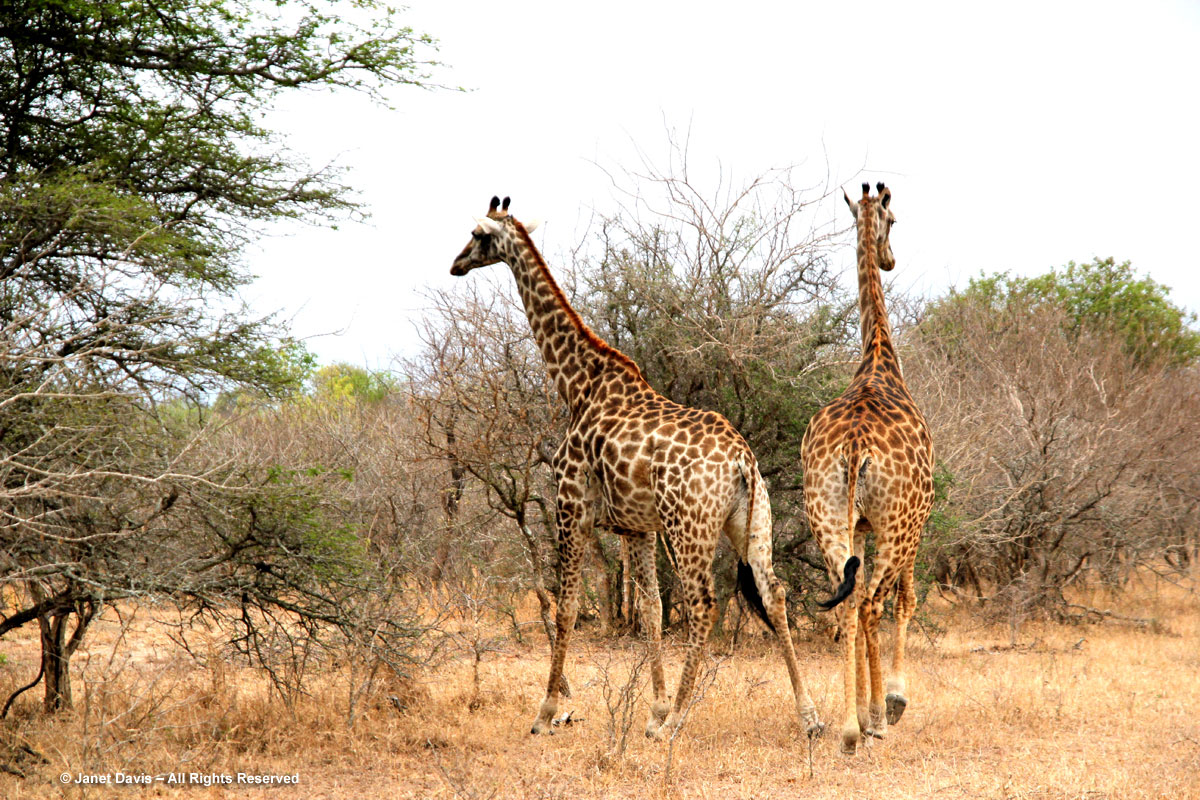 This giraffe below is nibbling on a knobthorn acacia (Senegalia nigrescens), her rough tongue carefully negotiating the succulent foliage around the thorns.
This giraffe below is nibbling on a knobthorn acacia (Senegalia nigrescens), her rough tongue carefully negotiating the succulent foliage around the thorns.
Kapama features more than 350 bird species. Here is a red-billed hornbill (Tockus sp.) in the grass by the road.
And some helmeted guinea fowl (Numida meleagris) peck about for seeds.
A pregnant plains zebra (Equus quagga quagga) is browsing in the grasses.
Dino knew from the time he was a young boy on safari trips with his parents that he wanted to be a ranger, so he worked in the mining industry long enough to earn a nest egg that allowed him to switch to this less remunerative but (for him) more rewarding profession. Here he is explaining the symbiotic relationship of some of the acacia species, aka African thorn trees (Vachellia sp.) with stinging ants that nest in galls in the thorns and can repel the animals that attempt to browse them by emerging to sting them. He breaks off a thorned twig so I can inspect it, but after I stab my hand with it for a second time, I toss it out of our vehicle.
Then we see a small group of female greater kudus. To the untrained eye, the nyala can be easily mistaken for a kudu – not surprising, since both are South African antelopes. But the males are easily identified, since kudus have twisted horns and nyala horns have just one angular bend. Dino points out the large ears of the kudu, noting that their acute hearing is a sensory compensation for poor eyesight.
Dino points up into a tree and we see a Verreaux’s eagle owl (Bubo lacteus) fledgling peeking over the edge of its nest. This is the largest African owl.
Our next sighting is a very thrilling one, and begins with a “hands-on” lesson from Dino. He has spotted a pile of fresh rhinoceros dung and some small antelope droppings. So we know that the rhinos are in the area.
We drive on, past a tall termite mound.
Trackers are always alert to animal tracks, and Willis and Dino follow some fresh ones for a few minutes. The direction helps them decide which way to drive.
It’s not long before Willis signals quietly for Dino to stop the vehicle, pointing to the left. There in the brush is a mother and juvenile white rhinoceros (Ceratotherium simum simum).
Dino carefully manoeuvres our vehicle in order to improve our view. South Africa has a strong conservation initiative to protect rhinos from the horrendous poaching crisis that has decimated their population in Africa, but no jurisdiction is immune from the unspeakable and vicious hunting of these animals for their horns. In fact, a few days from now, we’ll visit the Natural History Museum in Durban where we see a big display on rhino poaching and what is being done to curb it.
We stop in the bushfeld for sundowner cocktails as the sun sets. And before long, we’re wending our way back in the dark, with Willis’s flashlight scanning back and forth across the road for cat’s eyes.. Nothing tonight, alas. Dinner (the tame kind at a delicious buffet) awaits back at the lodge, followed by an early bedtime, for tomorrow’s first game drive means a 5 am wakeup call.

